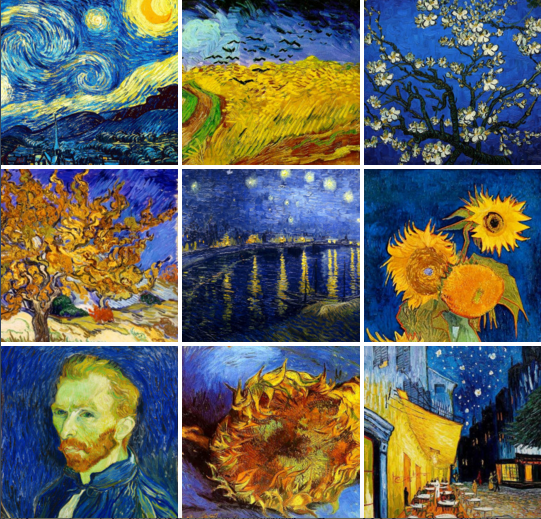Why was Van Gogh a painter who could not earn money?
Although Van Gogh is one of the best-known post-Impressionist painters today, he was not much appreciated during his lifetime. He painted some of his most famous paintings in a mental hospital. Here are the curiosities about Vincent van Gogh's life; Who is Vincent van Gogh, what did he do?

Vincent van Gogh is one of the best known post-impressionist (new impressionism) artists. Before becoming an artist, he failed at many jobs. Van Gogh was heavily influenced by the Japanese prints and engravings he worked with. The paintings he made with the encouragement of his brother brought him great fame after his death. So, who is Vincent van Gogh?
Vincent van Gogh was born in the Netherlands in 1853. Many in his family worked in the art world. Vincent had two brothers and three sisters. His younger brother Theo was closest to him.
Although he enjoyed drawing as a young boy, Vincent did other work before deciding to work as a full-time artist. Teaching and being a clergyman were just two of his jobs. At the age of 27, Van Gogh decided to devote himself entirely to art.
Early Years in His Career
When Vincent first started drawing, he used pencils or charcoal sticks. He loved to draw pictures of hardworking and poor people. Later, he began to paint using oil paints.
In this first part of his career, van Gogh used dark colors such as browns and dark greens. His paintings were often gloomy or sad. His most important painting at that time is 'The Potato Eaters'. Potato Eaters; it was a dark picture of a peasant family eating potatoes for dinner.
Vincent and his Brother Theo
Much of what we know about Van Gogh comes from letters he wrote to his brother Theo. Theo worked at an art gallery in Paris and supported Vincent's art career. He sent money to Vincent and encouraged him to paint. Theo tried to sell Vincent's paintings, but nobody wanted to buy them at the time.
Impressionism Period
Theo recommended Vincent to adopt a new style of painting called 'Impressionism' in Paris. In 1886 Vincent moved to Paris to explore impressionism. The painter was influenced by painters such as Claude Monet, Edgar Degas, and Camille Pissarro. He also became good friends with the artist Paul Gauguin. During this time, van Gogh began to use brighter colors. He painted subjects from the streets, cafes and countryside of Paris. He also began to paint portraits of people. When he couldn't find a model, he painted himself to practice. During this time he painted over twenty self-portraits.
Moving to Arles and Friendship with Paul Gaugin
In 1888, van Gogh moved to Arles, France. He rented a yellow house to live in and invited artist Paul Gauguin to join him. He loved the vibrant colors and the bright sun of Arles. The colors in his paintings became more vivid and bright. Sometimes he would apply the paint directly to the canvas from tubes, leaving it thick with rough brushstrokes. Because the paint was so thick, sometimes his paintings could take weeks to dry.
Vincent painted hundreds of paintings in Arles, sometimes painting more than one masterpiece in a single day. He became completely obsessed with art. Paul Gauguin joined Van Gogh at the encouragement of his brother Theo. During their stay together, they were fascinated by each other's pictures. However, the quarrel between the two artists caused Gaugin to leave Arles and Van Gong to cut off his ear.
Mental Hospital Years
In 1889, van Gogh could barely look at himself. He was admitted to a mental hospital. There he painted Starry Night, one of his most famous paintings. Many of his paintings during this period featured a multitude of swirling colours.
Death
Van Gogh's mental state continued to deteriorate after his admission to a mental institution. He died from a gunshot wound to his chest on July 29, 1890. Although it was said that his death was a suicide, it was also thought that he was killed. Vincent's death is still a controversial topic today.
